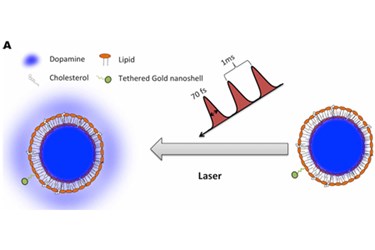Using Femtosecond Lasers And Gold Nanoparticles For Targeted Drug Delivery
By Joel Lindsey

A joint team of researchers from Japan’s Okinawa Institute of Science and Technology (OIST) and the University of Otago, New Zealand has developed a new method for administering drugs to highly specific target sites using a combination of laser technology, nanoparticles, and neuroscience.
“With this method, we can administer a wide range of drugs with precise timing and duration using laser pulses with sub-second accuracy,” Takashi Nakano, a member of the research team who works in the OIST Neurobiology Research Unit, said in a press release published recently on OIST’s website. “We are very excited about the potential this new tool brings to neurobiological research.”
In a recent study, the results of which have been published in the journal Scientific Reports, researchers tested their new technique as a possible treatment method for Parkinson’s disease.
Because Parkinson’s Disease disrupts the body’s release of the neurochemical dopamine, researchers wanted to use their technique to manually simulate and restore this natural process. They began by encapsulating dopamine inside a shell of fat, called a liposome, which was then tethered to a gold nanoparticle. When a pulsating femtosecond laser hit the gold, the nanoparticle transferred the energy into the liposome, causing it to open and release the encased dopamine.
After successfully modeling this technique in a laboratory setting using dopamine, researchers involved with the project believe the technique could be used to deliver a wide variety of drugs, chemicals, or naturally occurring substances to very precise locations in a patient’s body.
Using pulsating femtosecond lasers could make it possible to control both when and at what rate a drug is released into the body, all of which researchers say could provide a more effective and safer method of administering drugs and other compounds.
In particular, researchers have focused on the new technique’s potential to deliver drugs in a highly controlled way that could reduce the occurrence of unwanted side effects, many of which occur when a drug affects healthy tissues and cells along with the targeted infected tissues and cells.
The team plans to test its laser-activated liposomes in living tissue next and hopes to eventually use it in a live animal, according to the press release.
Image Credit: Scientific Reports
